Visiting the wonderful Darjeeling Himalayan Railway
Posted by Chris Graham on 9th April 2024
Simon Colbeck provides an update on heritage transport in north-east India, including the wonderful Darjeeling Himalayan Railway.
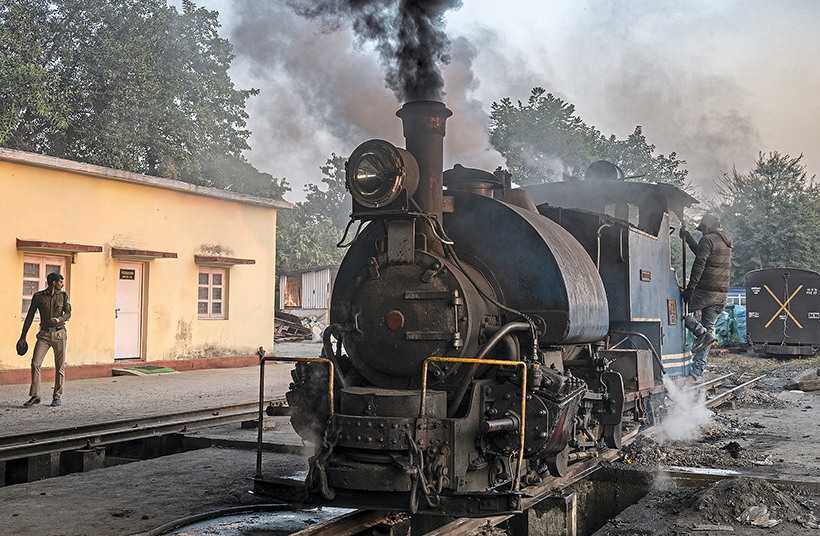
Darjeeling Himalayan Railway: Engine preparation at Siliguri shed. B01 is prepared for duty.
In January this I finally fulfilled a lifetime ambition to visit the Darjeeling Himalayan Railway. But, while in northern India, I also managed to take a look at some of the other heritage transport delights to be found in this fascinating country.
First stop was the former British capital city, Kolkata, formerly known as Calcutta. The is full of historic colonial architecture and is home to India’s last tram system. Originally comprising of 37 routes, today the system really is on its last legs with just two routes operating a sporadic service. The antiquated trams run on standard gauge track, a real rarity in India where the national rail network is mostly 5ft 6in gauge.
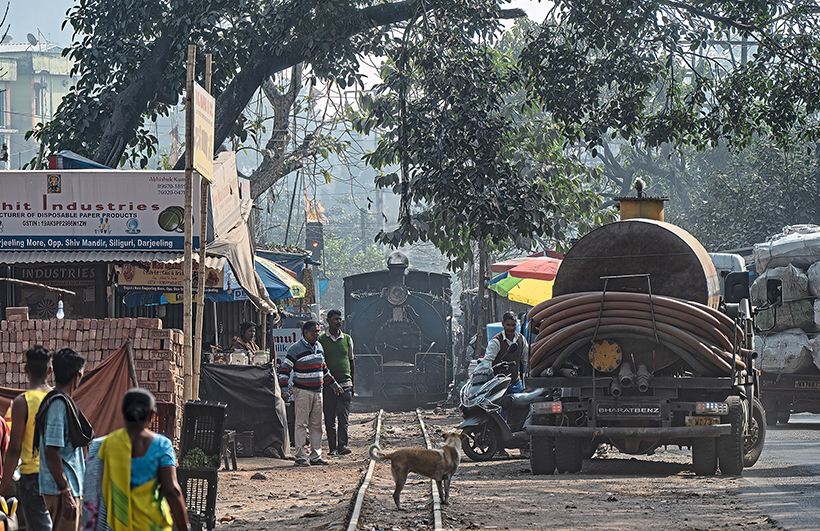
B01 disturbs the hustle and bustle of a street market on the outskirts of Siliguri, as it works the Darjeeling Tours charter train.
Quite how long this dilapidated system can soldier on is anyone’s guess but, for now. it’s a fabulous way to get around this amazing city.
In Kolkata’s Howrah district, a recently renovated railway museum has opened. This includes an interesting collection of East Indian railway locomotives and is very popular with Indian families enjoying the clean, park surroundings of the site. In addition to the railway exhibits there’s a single-cylinder Marshall portable and a Garrett 9-ton single road roller. Sadly, though, there’s no visible works number on this interesting survivor.
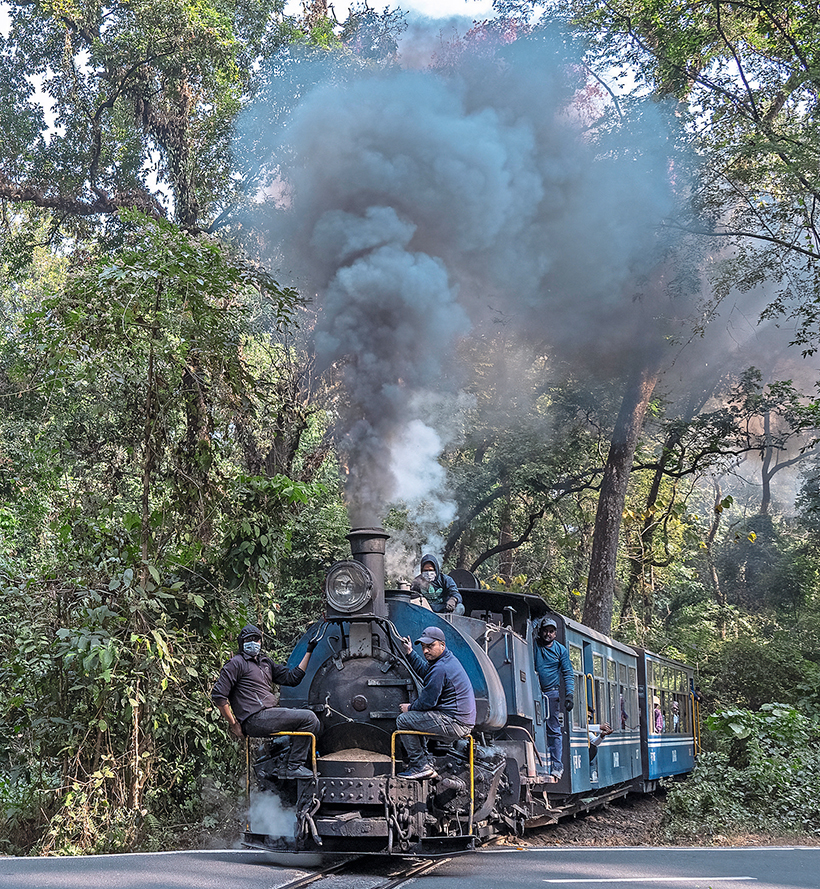
Near Sukna the sanding crew on B01 take a break as the little engine blasts its way through the jungle section of the line.
Moving north to West Bengal, our base was the city of Siliguri; a sprawling metropolis and the starting point for the Darjeeling Himalayan Railway. In the area there are a number of interesting road steam survivors which, of course, I was very keen to see.
First was a very rare Ransomes, Head & Jefferies portable, works number 5700 of around 1884. This is situated at the Mohurgong tea plantation, near Sukna. The tea factory is in the process of opening a heritage centre and this fine old portable has received a little cosmetic restoration in preparation for opening to tourists.

Sparks fly as B802 receives attention in Tindharia works.
In Siliguri itself are two interesting rollers. At the public works department bungalow, a 6-ton Aveling Barford roller, AG753 of 1947, can be found in a recently applied bright paint job. Then at the Siliguri public works department head office, Aveling & Porter 10-ton roller No. 7756 of 1922 is plinthed in the office forecourt.
Another Aveling can be found a few miles away at the public works department bungalow at Malibazar. Aveling & Porter 10-ton single roller No. 3569 of 1895 is proudly displayed on a plinth high above the works main entrance.
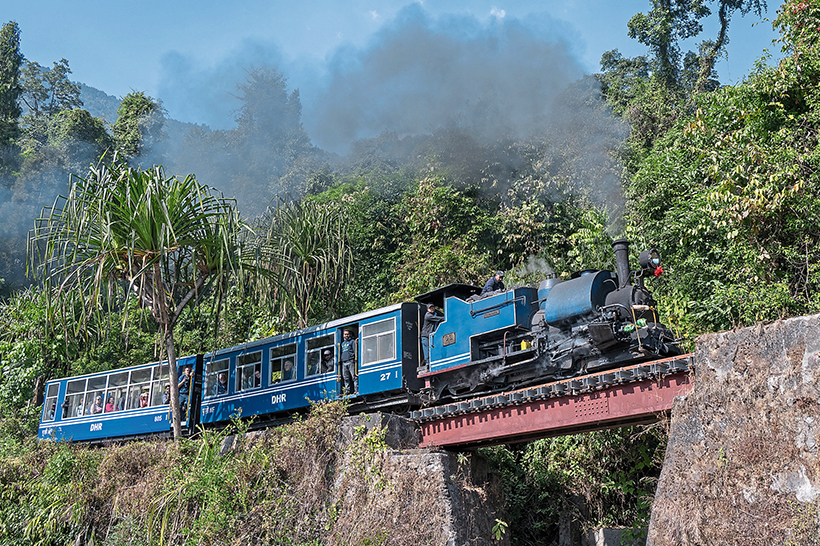
B01 heads up towards Mahandi in the spectacular countryside.
Of course, the main reason to be in Siliguri was to visit the Darjeeling Himalayan Railway.
The 53-mile railway opened in 1881 and originally followed the route of a simple cart road for its entire journey up from the plains at Siliguri to the summit at Ghum and on to Darjeeling. It was soon found that this route was far too steep in places and so a series of four spirals and Z-type reverses were added to the alignment to ease the prevailing gradient. Despite these changes, the ruling grade is still an eye-watering 1-in-22 and, in some places, much steeper than that!
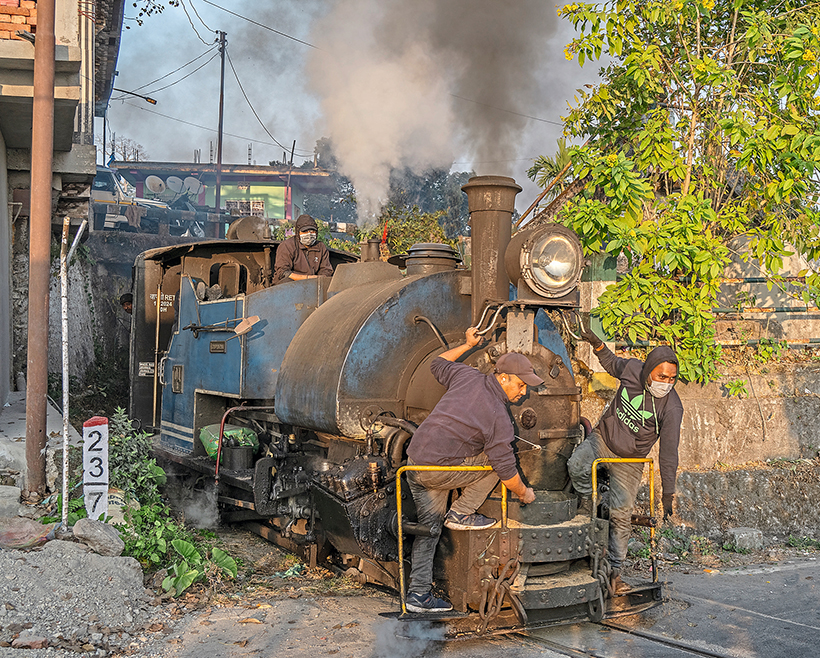
Heading round the spiral at Chumbati, B01 takes a run at the grade as it heads round the loop to cross over itself.
In 1962, the railway was realigned at Siliguri and extended by nearly four miles to New Jalpaiguri station to meet the new broad-gauge line there. Siliguri has long been converted to broad gauge, and the section from New Jalpaiguri to Siliguri has been electrified. The DHR shares some mixed gauge track on this section and, because of the overhead wires, steam is now banned from this part of the line.
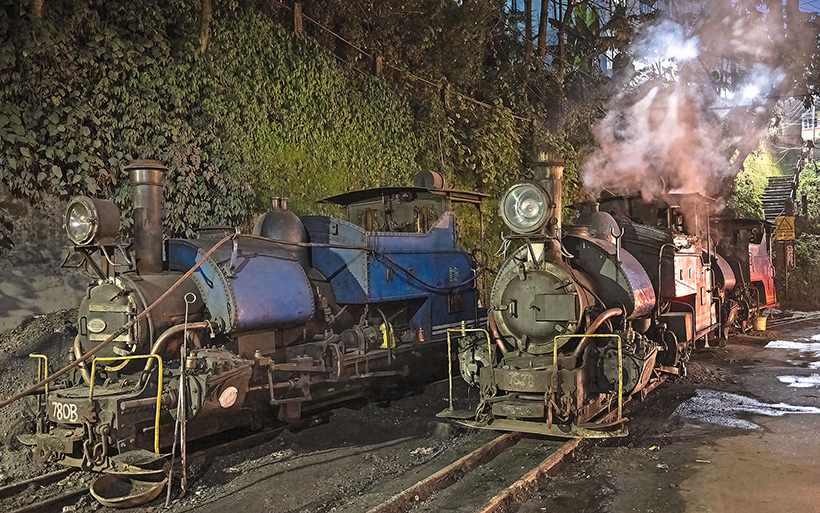
An after-dark view of Darjeeling shed where the engines are kept in steam overnight. B class 780, 782 and 805 sit outside the shed waiting for another day of hauling tourist trains up to Ghum and back.
From Siliguri to Sukna, the DHR travels out through the ever-expanding suburbs of the city, with the line sharing space with market traders and street vendors. Eventually the railway leaves the market stalls behind and passes some attractive lowland tea plantations.
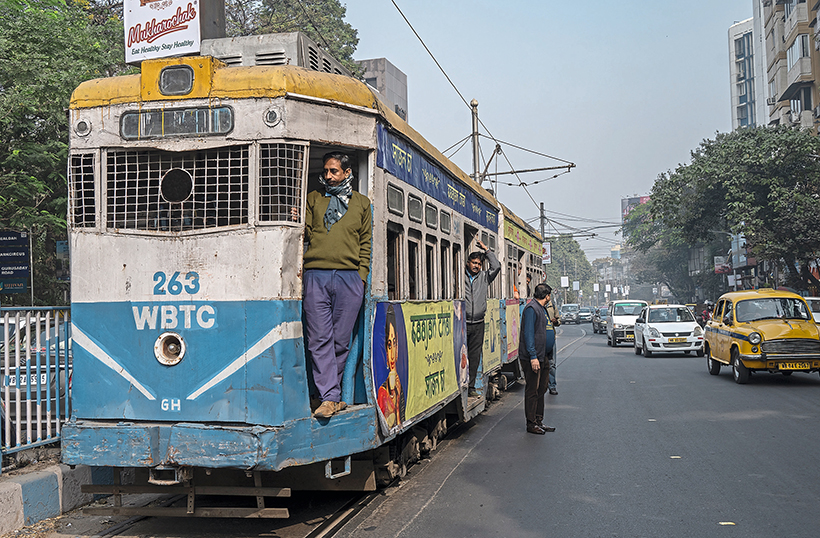
Tramcar 263 out on the busy Kolkata streets. To the right is one of Kolkata’s yellow Ambassador taxis, themselves very much in their last days of service.
After Sukna the line is characterised by dense jungle with the railway often only being glimpsed as it criss-crosses the cart road which roughly follows its alignment. It’s a serious climb from Sukna up to Tindharia, which lies at an elevation of almost 3,000ft. To achieve this rapid rise in height this section of the line includes three zig-zag reverses and a very tight spiral at Chunbati.
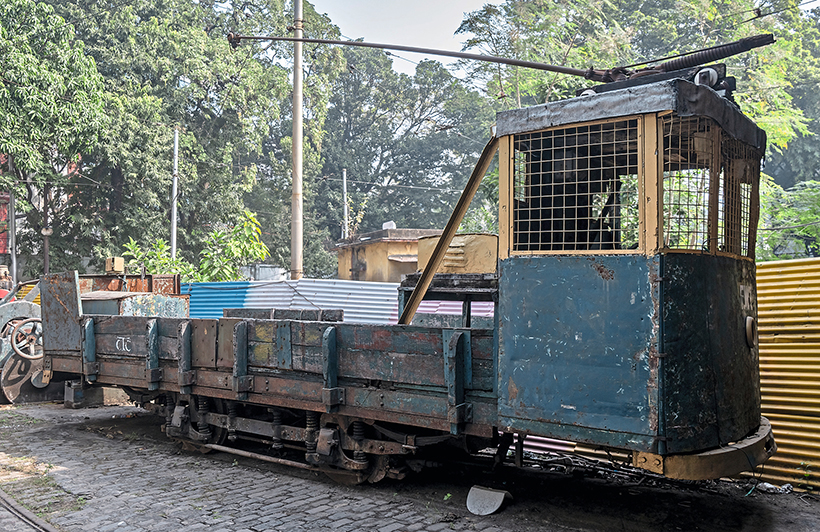
A vintage departmental tram at Kolkata Gariahat depot still carries its CTC initials.
Tindharia is where the main works for the railway are located. The workshop is precariously perched on an outcrop high above the railway. Its exposed position was brought into sharp focus in 2011 and 2012, when a series of landslides severed the railway and threatened to dump the workshop into the valley below. Fortunately, today a massive program of earthworks have stabilised the hillside and allowed the railway to re-open.
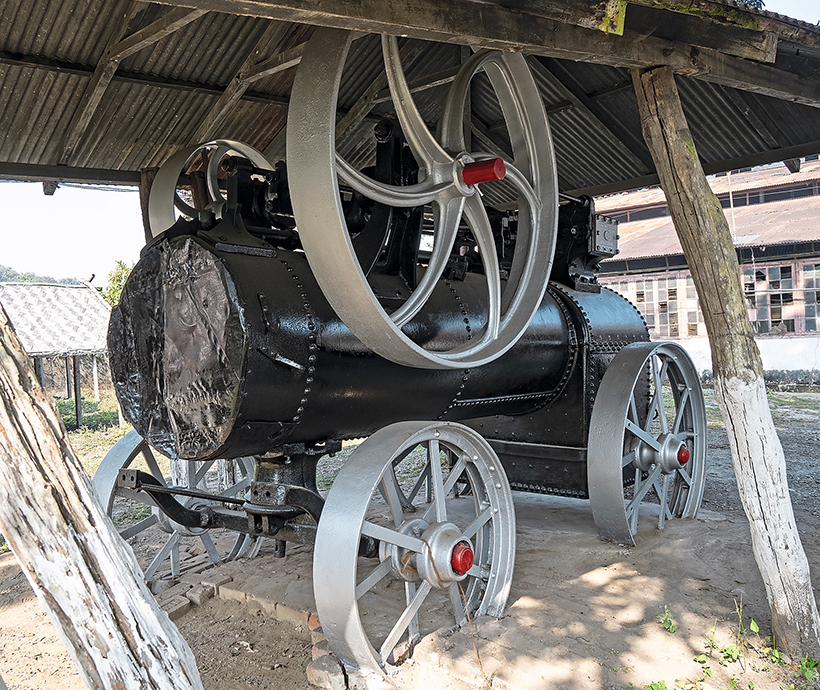
Ransomes, Head & Jefferies portable No. 5700 of around 1884 at the Mohurgong tea plantation near Sukna.
The workshops are well equipped and overhaul the steam fleet and coaching stock. At the time of my visit, 1914 North British-built B 791 was in the middle of major overhaul with what looked like a new boiler about to be fitted.
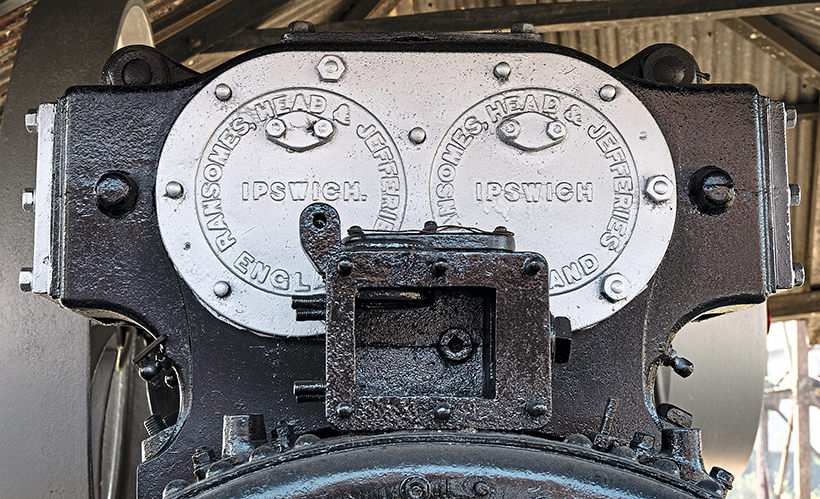
Close up of the cylinder block on the Ransomes, Head & Jefferies portable.
On leaving Tindharia more reverses and the famous spiral at ‘Agony Point’ allow the train to gain more height before arriving in the bustling town of Kurseong where it stops for water. It then reverses back out onto the line to run down the town’s high street! It is a sight to behold as the train climbs up the street past all the shops and market stalls. Leaving the street-running of Kurseong the railway climbs through tea plantations passing Buddhist monasteries on its way up to the station at Ghum. At 7,407 feet above sea level, Ghum is the highest station on the Indian Railways network.

Aveling & Porter 10-ton single roller No. 3569 of 1895 plinthed at Malibazar.
After a small final climb up to the Bhatasia loop it’s an easy downhill stretch into the sprawling hilltop resort of Darjeeling.
Sadly nowadays steam working on the main body of the line is restricted to charter operations. The once-a-day up and down trains are both operated by the fleet of six NDM6 diesel locos. These 335hp locomotives were built by San Engineering in Bangalore in 1998 and, by 2000, they had taken over most line working.
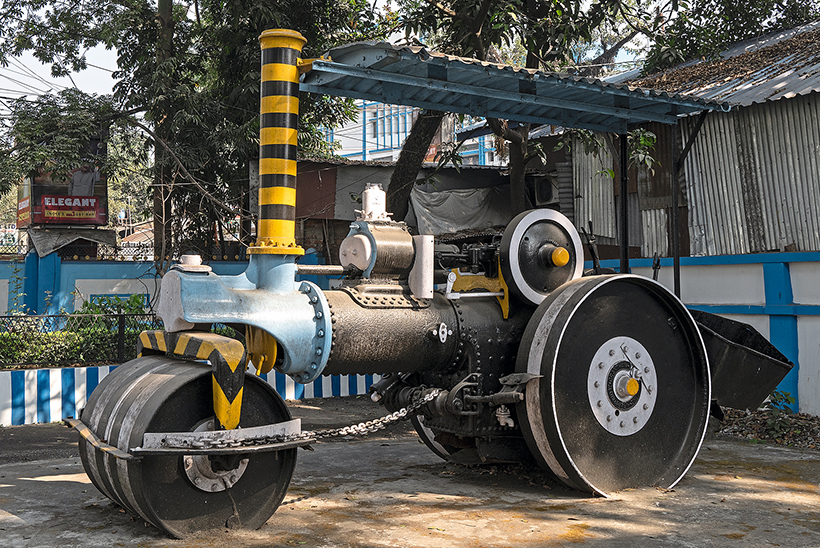
A colourful 6-ton Aveling Barford roller, AG753 of 1947 in Siliguri.
The 56-mile journey in both directions takes eight hours and is still in high demand from tourists visiting the area.
Steam survives on pilot duties at Siliguri, but its main purpose is for the tourist-targeted ‘Joy Trains’ which operate from Darjeeling to Ghum. For these services most of the railway’s operational steam fleet can be found at Darjeeling shed. At the time of my visit three locos were in steam and all sorts of emergency repairs were being undertaken to keep them running.
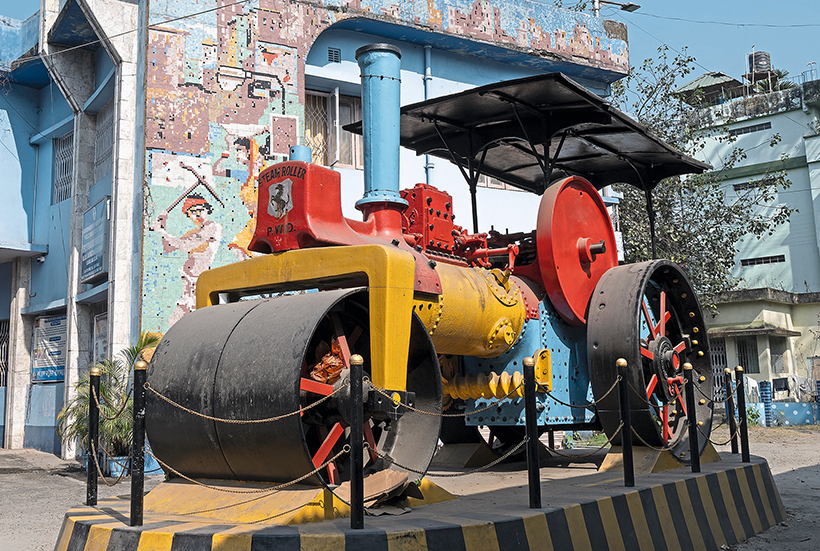
At the Siliguri public works department head office Aveling & Porter 10-ton roller No. 7756 of 1922 is plinthed in the office forecourt.
Of the 38 members of the famous B class tanks constructed, 13 reside on the railway today. Our train locomotive was the newest of the fleet, B01. The B class have a crew of five. Two sanders are situated on the front buffer beam to hand-sand the rail in front of the engine, a coal smasher sits in the coal bunker and a driver and fireman occupy the tiny footplate. These incredible locomotives were first introduced in 1889, with the first example being constructed by Sharp Stuart & Co of Glasgow. A narrow gauge classic, the B class must be one of the most successful narrow gauge designs ever built, and it’s amazing to see them still at work today.

The unidentified Garrett 9-ton single road roller at Howrah railway museum in Kolkata.
The DHR and the Kolkata trams in India really are fantastic transport survivors and, together with the plinthed road steam, make a visit by heritage transport fans most rewarding.
All images by the author
Thanks to Jagdeep Patel and Darjeeling Tours Ltd
This feature comes from the latest issue of Old Glory, and you can get a money-saving subscription to this magazine simply by clicking HERE
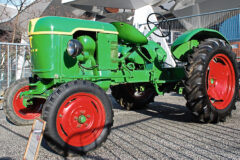
Previous Post
Visiting the fantastic Rétromobile show, in Paris
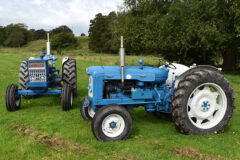
Next Post
A real passion for Ford and Fordson tractors



